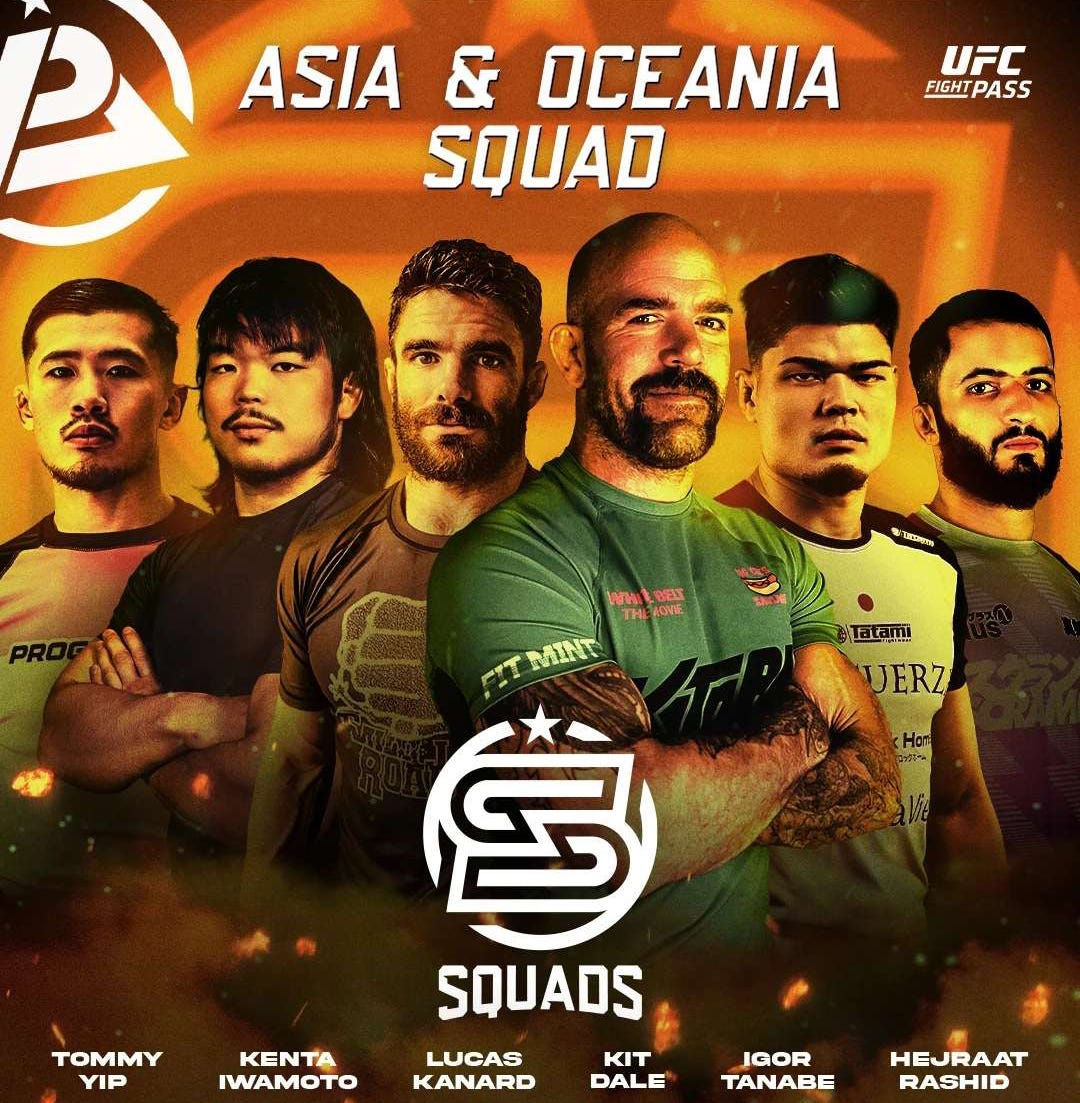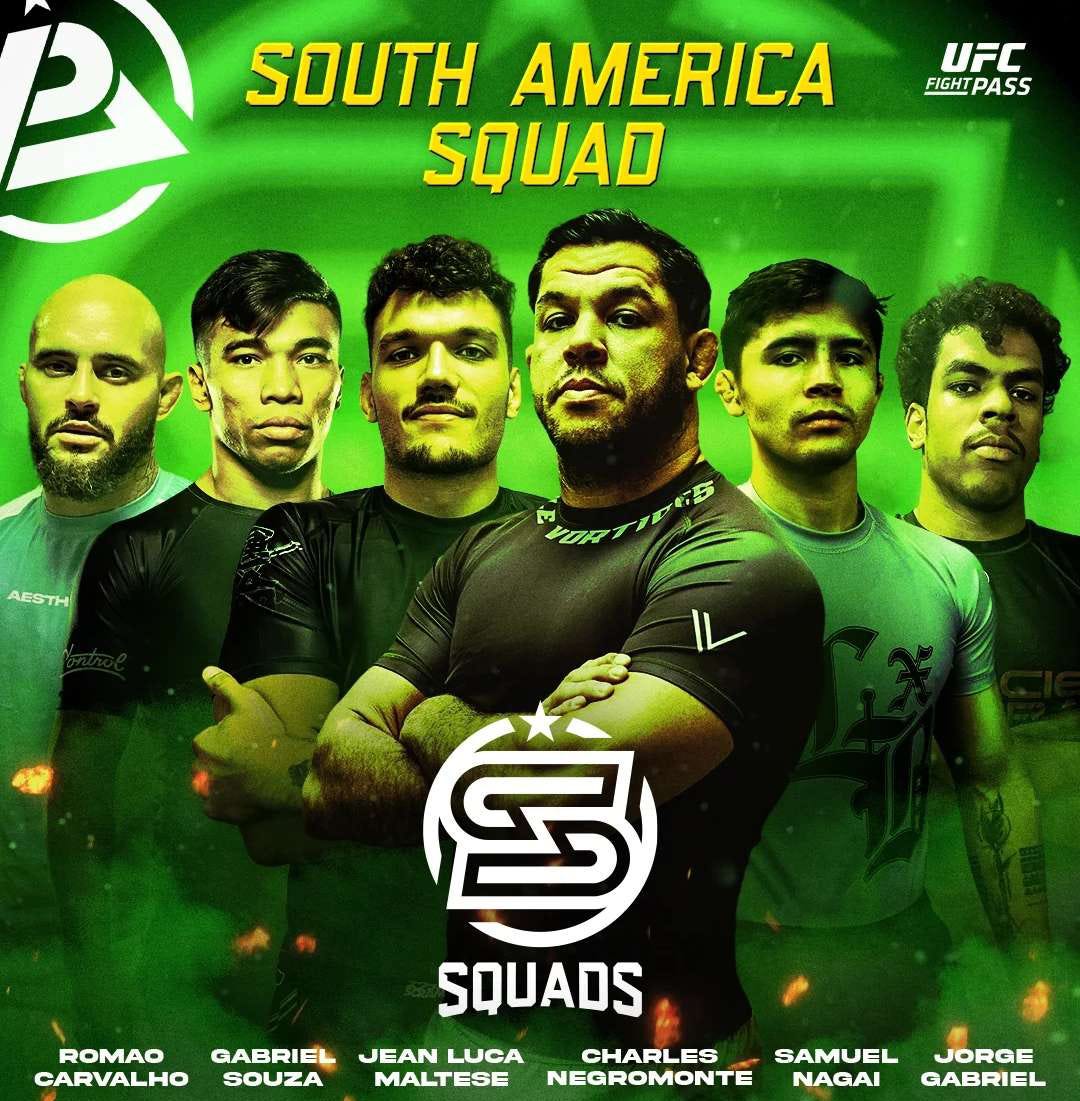Scrambling: Polaris 33
Eric continues to make the case that team jiu jitsu events are more entertaining. Oh yeah and there's a team jiu jitsu event this weekend.
SATURDAY, SEPTEMBER 13 FROM FAIRFIELD HALLS, CROYDON, UK
BROADCAST: UFC Fight Pass
STARTS: 3pm GMT
While writing up the preview for CJI 2, I let slip that I had fallen behind on some good Polaris action. Specifically the fact that Polaris was running a four team Squads tournament this year. So while I, embarrassingly, missed the first half of the bracket with this week’s Polaris 33 we have a chance to correct course and look at the second half of the bracket before heading off to the finals at Polaris 34 later this year.
But first, there is a small matter of a championship belt being held by that demon, Vacant.
Main Event: No Gi Light Heavyweight Championship - Owen Livesey vs Tommy Langaker
It may be surprising to hear, but Craig Jones, the man most famous for always coming in second place, was the previous (and only) Polaris LHW Champion. However, due to inaction in the organization and his more recent retirement from competition, Polaris have saw fit to finally replace the Bogan from Adelaide with an actual European champion for a European grappling organization. Novel idea, isn’t it?
With the belt vacant, Polaris selected the UK’s own Owen Livesey and Norway’s Tommy Langaker to face off to earn the belt. Livesey, a former judoka turned BJJ black belt, has built a reputation for his dominant top control and takedown game. Meanwhile Langaker, a multiple-time IBJJF champion, brings a more dynamic and submission-oriented approach.
Stylistically, the match pits Livesey’s judo-based takedowns offense and positional control against Langaker’s fluid guard work and submission threats. Livesey’s strength lies in his ability to dictate pace from the top and neutralize attacks through pressure and grip control, whereas Langaker excels in creating scrambles, attacking legs, and transitioning to the back. Meaning the two are very good mirrors of each other’s style.
As far as recent performances, Livesey has continued to impress in Polaris events with creative takedown sequences and strong defensive grappling, while Langaker has expanded his résumé with competitions in ONE Championship and consistent podium finishes at various IBJJF competitions. Langaker’s ability to adapt across rule sets and weight classes suggests he may be more versatile in the submission grappling format, but Livesey’s physicality and control could stifle that creativity. Ultimately, while Langaker may have more tools in open exchanges, I can only see Livesey’s ability to control tempo and avoid danger being the main characteristic of this match. Livesey snags the belt via Decision.
Squads World Tournament
I have repeatedly argueed that team-oriented jiu jitsu competition events are the best way to build up the sport so that it transitions away from “only for those in the know” to “hey this is now somewhat more accessible to casuals.”
Polaris have seemingly agreed with this approach, as they’ve been running a 4 team year long tournament. Something I was not really aware of but I’ve already accepted that yeah that’s my bad, and isn’t just a cast of Polaris being seemingly inept. That trait exists for other organizations.
In fact, Polaris have pretty consistently ran events and put on shows since their inception. Were they always high profile and must see TV? Not necessarily, but their ability to have put on 32 events helps to show they’re not a horribly mismanaged organization. Or at least, they keep all the horribleness very much contained.
SQUADS vs QUINTET
The format that Polaris uses for its team events, called Squads, is both a familiar format but also introduces its own wrinkles and take on team-vs-team competitions.
Each team contains six members and from there you already see the difference, as Quintet opts for five members per team. Additionally, in Squads you must have three members of the team be under 80kg, and the three members remaining must also be between 81kg and 95kg. So we see here that Squads wants to keep the weights to a rather reasonable range, which Quintet format foregoes, and CJI 2 tries to be somewhere in the middle of.
In addition, each team has their own Team Captain who pretty much fills the role of being a the coach as they decide on the fly which competitor they will send out next, and if need be they are the only person who can call for a timeout. Which, again, helps Squads stand apart from being a “Quintet clone” as the idea of timeouts existing in jiu jitsu competitions is rather alien and a newly explored concept.
Each match between a member from each team is set for a five minute period. The winner of the bout stays on and competes against the next competitor from the oppossing team. These bouts determine a winner based off of a submission victory, or by a judges decision.
These judges are also necessary in the overall determination of which team is the winner. You see, a submission win gets your team two points overall, with an There is an added wrinkle that if a person in the -80kg grouping submits someone in the -95kg grouping, their team gets three points. If the bout goes to full time the judges determine who the winner is, and that team receives 1 point overall. These points are tallied and ultimately the team with the most points is declared the winner. However, this structure does also allow for ties and so what do you do?
Well this is again where the Team Captains come into play as, if there is a tie after all members of the team compete through the two captains face off in a final five minute tie-breaker “superfight” to determine the winning team.
It’s…simple, and also very nuanced in how complex the competition can get.
I’m not the biggest fan of it, but I do appreciate that it’s at least trying to do something original, and still not over complicating things.
Team Asia & Oceania
Team Asia & Oceania may all come from very distant locations within the region, but their Polaris 33 lineup is packed talent. Led by veteran competitor Kit Dale, the team blends experience with explosiveness, and they’re expected to pose a serious challenge. Their opening match against South America will test their cohesion and resilience.
Tommy Yip
Tommy is a UK-based competitor who has been very actively in the AJP Tour competitions. He’s earned podium finishes at Abu Dhabi Grand Slam events in London, Istanbul, and Rome, and ranks among the top competitors in the UK and Europe. Yip is known for technical gi game, which has shown to translate well to no-gi competition.
Kenta Iwamoto
Similarly to Lucas, Kenta is fresh of CJI. And much like Lucas it’s almost unnecessary to go over his accolades. However at CJI he helped demonstrate his game which blends judo foot sweeps with modern no-gi techniques, and his aggressive grappling style.
Lucas Kanard
Given he just competed the other week at CJI 2 I’ll just expand a bit on Lucas’ background. It should be no surprise that Lucas has gained recognition for his aggressive leg lock game and well-rounded skill set. While he didn’t perform to the expectations The Devils may have hoped, he has another opportunity to help get a W for the Eastern Hemisphere.
Kit Dale
Australian black belt known for his rapid ascent in jiu jitsu, earning his black belt in under five years. He won four UAEJJF world titles in the colored belts and claimed victories at events like ADCC Japan Trials, IBJJF Sydney Open, and Pan Pacific Championships. Dale competed in prestigious events such as Metamoris, Polaris, and Copa Podio, and became known for his conceptual approach to training, emphasizing problem-solving over drilling.
Igor Tanabe
Known most popularly as the “Fat Ninja,” Tanabe has a submission-heavy style with a modern guard game that took him all the way to winning titles at the IBJJF World, European, and Asian Opens. He also holds several notable grappling victories over top names like Tommy Langaker and Haisam Rida.
Hejraat Rashid
Hejraat is a competitor I’m not overly familiar with. However going over his available online bio, he has been on a tear in the UK scene winning gold at the British Open. His consistent performances have earned him top rankings in the Smoothcomp circuit, which may or may not be a perfect measurement but hey it’s something. He, like Kenta, has a fairly aggressive style as well. Sounds good!
Team South America
Team South America enters Polaris 33 as one of the tournament favorites, boasting a deep roster led by ADCC silver medalist Gabriel Sousa. The team can best be described as a well rounded group who are hoping to secure a spot in the grand finale against Team Europe later this year.
Ramao Carvalho
Carvalho is best known for his competition efforts in the AJP circuit, including the Abu Dhabi World Pro. Representing ZR Team, Carvalho has participated in international tournaments and is known for his solid fundamentals and competitive consistency. While he rather unseen to most no-gi audiences, detailed records of his accomplishments are limited, he has been a highly active competitor in the professional circuit.
Gabriel Sousa
Sometimes it’s Sousa, and sometimes its Souza, but one thing remains its always the same guy. A regular in the higher ends of the no-gi scene, he has gone on to win 2nd at the 2022 ADCC World Championships, as well as medaling at IBJJF Worlds, Pan Ameriacs (Pans), and multiple AJP Grand Slams. Sousa is known for his dynamic style, with a preference for back attacks and triangle submissions.
Jean Luca Maltese
Jean Luca is a Venezuelan black belt who predominantly competes in Europe where he lives. Known for appearances at the Abu Dhabi World Pro and Grand Slam series, he has earned top rankings as a result of being one of Europe’s most active competitors and continues to build his reputation in the European circuit.
Charles Negromonte
Another recent competitor at CJI 2, Negrmonte was part of the lackluster Gorillas representing the Americas region. Despite the poor showing at CJI 2, Negromonte has plenty of experience and consistently to still be able to put on a good performance against Team Asia and Oceania.
Samuel Nagai
A Checkmat product, Nagai won the 2023 IBJJF World Championship and has earned his way to the podiums at IBJJF Pans. Nagai has developed a blitz-passing style and a high submission finishing rate overall approach.
Jorge Gabriel
A very active gi competitor, Gabriel recently saw a second place finish at the 2025 IBJJF World Championships as a brown belt, as well as taking gold at the 2024 IBJJF Pans. While relatively unknown on the pro scene, he still poses to be a very game competitor.
It’s easy to recognize that South America boasts a roster stacked with high-level competitors like Gabriel Sousa, Samuel Nagai, and Charles Negromont, but there is equally skilled, if not better, talent on Team Asia & Oceania. Kenta, Lucas, and Kit are a strong trio that pose serious issues for Team South America to overcome in this format. So, while South America may be the spiritual home of jiu jitsu, I’m giving this one to Team Asia & Oceania.





